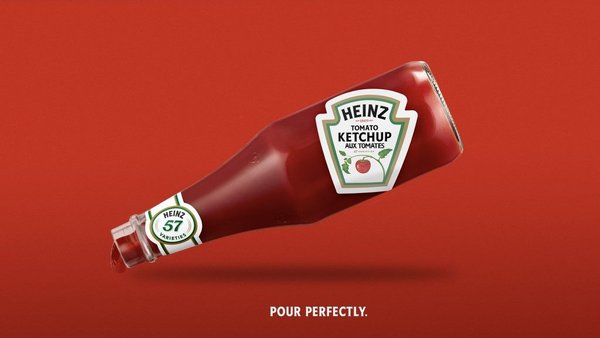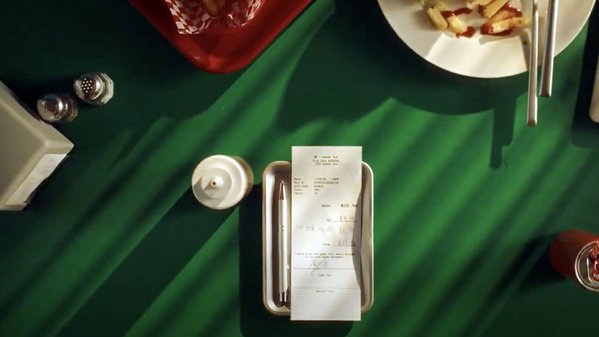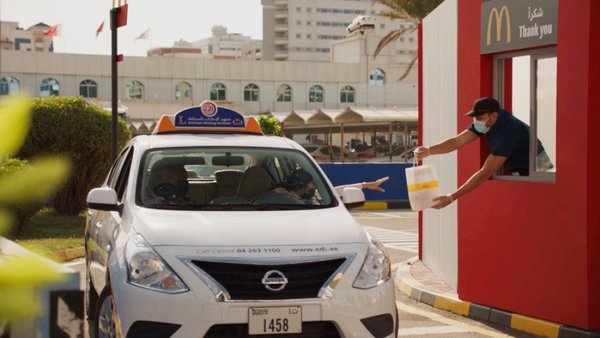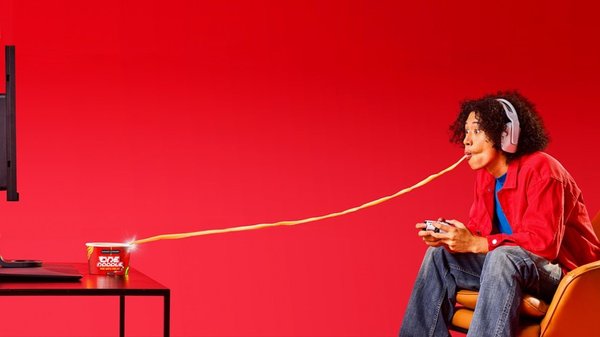
‘Three out of four North Americans prefer Heinz Ketchup when eating out’ – that’s what Kraft Heinz says about the popularity of its signature red sauce. Although some people think they are being served Heinz Ketchup given the 57 glass bottle on the table, the brand’s latest Ketchup Fraud campaign plays on the knowledge that sometimes restaurants cut condiment corners.
Created by agency Rethink, Toronto, the campaign captures three scenarios of restaurants sneakily filling up Heinz Ketchup bottles with cheaper alternatives. The undercover style visuals of the execution were inspired by a viral image of an employee at chicken restaurant Nando’s seemingly filling up a Heinz Ketchup bottle with an unbranded substitute.
Following the April launch of the campaign’s print, OOH and social assets, Heinz took to social media to get people to name and shame restaurants engaging in Ketchup Fraud – with the promise that some offending restaurants will be sent a pallet of the real stuff.
Results Updated 15/7/2024: According to the case study, Heinz was added to 33 locations. The campaign generated 92% positive sentiment and an engagement rate 128 times above benchmarks. There was an 8% sales uplift compared to previous year.
The campaign won a Graphite Pencil for Press and Outdoor at the 2023 D&AD awards. It also won a Gold in the Outdoor category at the Cannes International Festival of Creativity 2023, and it won Gold in PR at Cannes Lions 2024.
To find out more about the global campaign and the insight behind the execution, Contagious spoke with Megan Lang, head of brand communications of Heinz North America, and Mike Dubrick, chief creative officer at Rethink, Canada. They told us:
- For several years, the strategy behind Heinz Ketchup’s creative marketing has been centred around emphasising the brand’s iconic status in culture
- The brand explains that demand for Heinz Ketchup in dining out occasions comes from consumers; Ketchup Fraud taps into that to encourage food outlets to choose Heinz over cheaper alternatives
- To capture the real and raw nature of the insight, Heinz sacrificed the visibility of its product to instead create a visual that looked realistic, as well as making sure to use universal backdrops to feel relatable to audiences in different markets
- Heinz and Rethink like to create a masterplan for campaigns, launching iteratively so the idea can be built upon and added to based on the reaction in culture
Who are Heinz Ketchup’s key competitors within the restaurant space?
Megan Lang: Heinz Ketchup really does have a variety of both branded and unbranded competitors in the restaurant space, which we call internally ‘Away from home’. Heinz is still the leader in both retail and away from home, but we do compete with both branded and unbranded competition.

Was there a creative brief for this campaign?
Lang: For this particular piece of work, it was born from the same brief that we’ve been working on for a long time: how can we make a more concerted effort to create conversation in culture such so that our ‘operators’ – which is what we call our restaurant customers – take notice and join in the conversation.
Mike Dubrick, Rethink
Did you conduct any research to help inform the direction of the campaign?
Mike Dubrick: We're all genuine fans of the Heinz Ketchup brand, and we all interact with the brand in culture. This idea was born from the experience of being in a restaurant and seeing a premium-looking glass Heinz Ketchup bottle on the table, but despite it being completely full, the label maybe looks a bit older or a little dog-eared on the side and having a suspicion that something just doesn't seem right – it really started from that conversation.
What was Heinz hoping to achieve with this campaign?
Dubrick: Consumer demand is really what drives interest for restaurants to carry the product, and there’s lots of ways to drive consumer demand, but Ketchup Fraud finds a way to create consumer demand in the eyes of the restaurateurs, so that these business owners see the value of the Heinz brand and not just ketchup as a commodity. It’s such an important thing for Heinz to remain an icon and not fall into the trap of becoming a commodity.
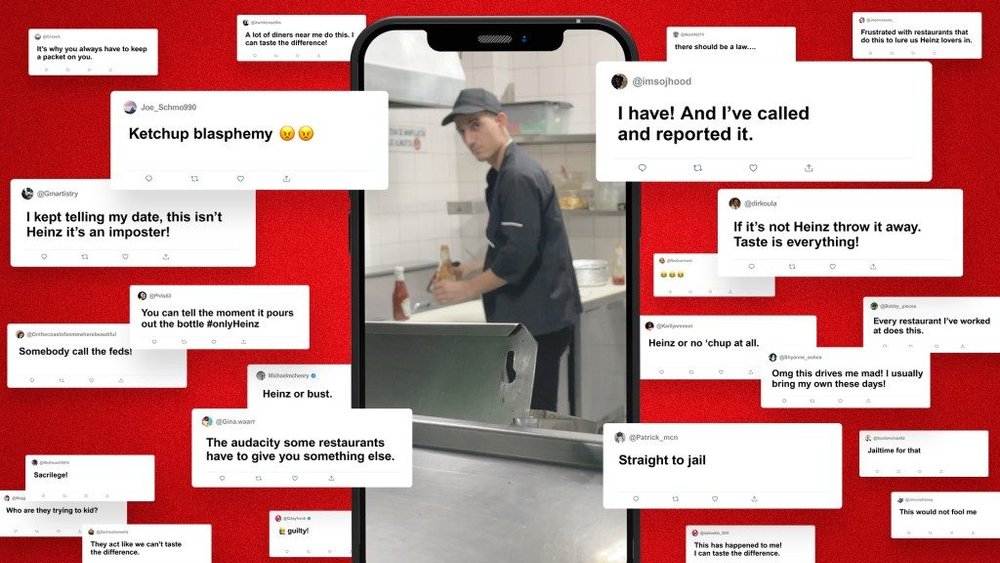
Did the viral image of a restaurant worker filling up a Heinz Ketchup bottle with another ketchup brand influence the campaign?
Dubrick: This campaign wasn’t necessarily a reaction to that specific video, we were already having this internal conversation about this behaviour happening out in the world. A lot of our ideas start from a gut feeling, but it’s not good enough to just think that it’s true, you need to have receipts. For Ketchup Fraud, it’s not just Heinz saying that this is happening in the world, but having consumers validate it too. So, we went to the internet to find proof and there was a lot of evidence of this taking place and it was a lot more common than we thought. That example was probably just the most glaring example of this caught in the act moment, so it inspired the execution a lot more than it did the insight.
Mike Dubrick, Rethink
What was the production process like of capturing these visuals and how did you manage to tell this whole story within just a single image?
Dubrick: It was really important for us that the images felt real and raw, so we actually used different cameras on set to try and capture that moment. The visuals also had to be relatable from a global standpoint, as this is a behaviour that people see all around the world, and we wanted to make sure that the locations felt like they could have been potentially anywhere. We talked about how far back and obscured the bottle should be, and to Lang and the Heinz team’s credit, they were certainly less precious than we normally would be about how prominent the actual brand and bottle were in the shot. If the labels were all perfectly facing and everything looked pristine, like it normally would in print, then all of a sudden you lose that realism. But despite the obstructions, angles and bottle being one eighth the size, you look at this and you instantly know it’s a Heinz ad – which really speaks to the power of the brand.
How did you land on the name Ketchup Fraud for the campaign?
Dubrick: We had a lot of back and forth conversations about what the name should be. In our minds, this was a global insight and we wanted this to be a global piece, so we had to make sure that the name was a really quick, relatable and understandable phrase. One of the names we had tossed around was Counterfeit Ketchup, but through our internal peer review process at Rethink, one of the pieces of feedback we had from our international creatives was that they were unsure everyone would understand ‘counterfeit’. Fraud however just felt really simply and easy to understand, obviously you want it to feel powerful, but at the same time not get in the way of the campaign – we needed the insight to really shine through.
Mike Dubrick, Rethink
What is the legacy behind the ‘It has to be Heinz’ brand slogan and why did you decide to use that copy with this campaign?
Dubrick: I feel there's been a nice transition in terms of the meaning of that line. In the past, it’s been a bit more functional around quality and speaking to that attribute of Heinz Ketchup. What we’ve tried to do is shift the meaning to still retain that, but also shift into a broader meaning about the iconicity of the brand and this notion that nothing else will do. Even when restaurants are not going to serve Heinz Ketchup, they’re still putting it in a Heinz bottle – that is a living and breathing manifestation of the ‘It has to be Heinz’ tagline, and pays it off better than we ever could.
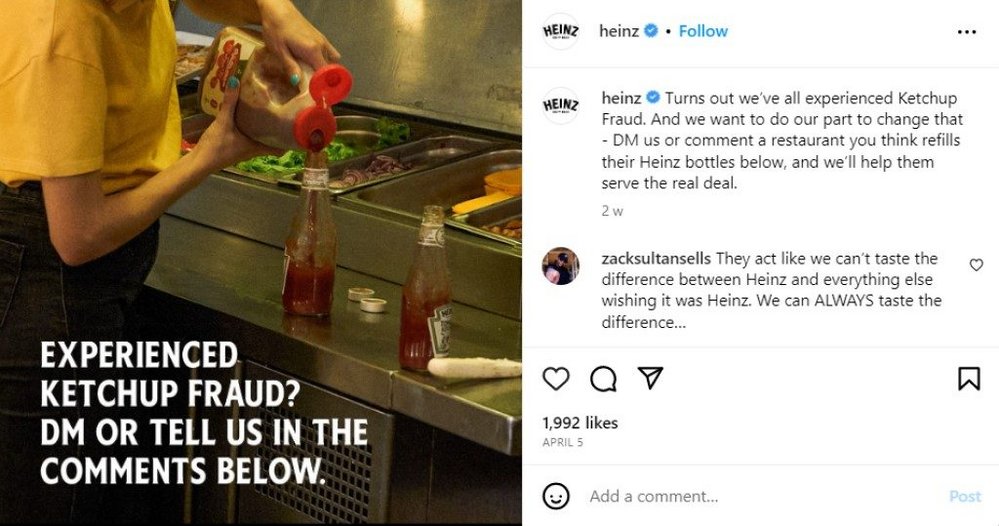
What is Heinz and Rethink’s ‘Go then grow’ philosophy and how was that utilised for the Ketchup Fraud campaign?
Dubrick: The way we like to interpret ‘Go then grow’ is that there’s always a grand plan, but you launch it in an iterative way that allows you to be flexible, nimble and reactive as possible to the campaign as it launches into the world. As a reference, something like Draw Ketchup inspired another iteration in the form of A.I. Ketchup – there’s opportunities here too as we’ve got this big human insight and there’s lots of ways to bring it to life.

Now that people have seen the Ketchup Fraud visuals, how is the idea being grown?
Dubrick: We wanted to put this work out and then see if our hypothesis was correct, to see if consumers would react by saying ‘yes, that’s me’ or ‘I know this place’. But this idea is so much bigger than a print piece, now we’re moving awareness into action. Over the past week on social media we’ve been more overly asking people to name names, DM us and let us know who these places are. Then the next phase is to send those places a pallet of Heinz Ketchup. It's really not about shaming restaurants, it’s about making sure that when people want it to Heinz, it should be the real deal.
Lang: Dubrick is totally right, this is not about putting restaurants or businesses on blast, it’s about listening to the voices of consumers and putting the power in their hands. That’s what has been really fun to watch as everyone's been reacting to this unspoken truth.
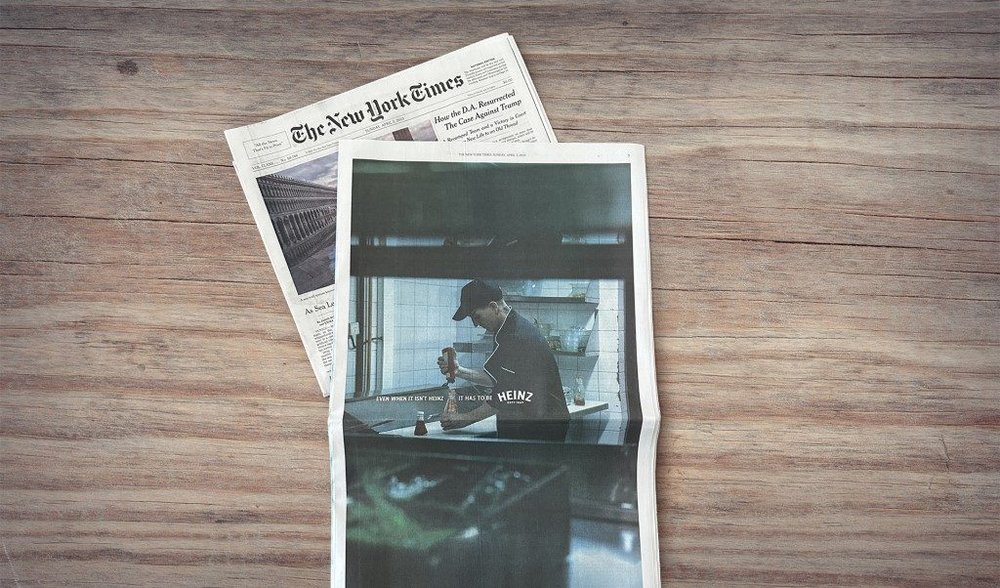
Mike Dubrick, Rethink
What was the media plan?
Lang: The campaign started with those beautiful stills that we had as OOH and print, where we decided to lean in quite heavily with the New York Times – which felt like a great match due to the voyeuristic nature of the visuals.
Dubrick: We felt like Ketchup Fraud deserved the stage of being a full-page print ad, which is one of the most powerful and engaging ways that you can see the ad.
Lang: We also made some cool video content too, so Ketchup Fraud didn’t just stick to one thing, it really lived across the board. Then on social, we put quite a bit of paid media behind this campaign to make sure that we were getting it in front of customers and drumming up some conversation. We went quite big with this first phase of the campaign, but these are evergreen assets and we’ll definitely be using them again over the coming months and putting money behind them in the future ahead of us.
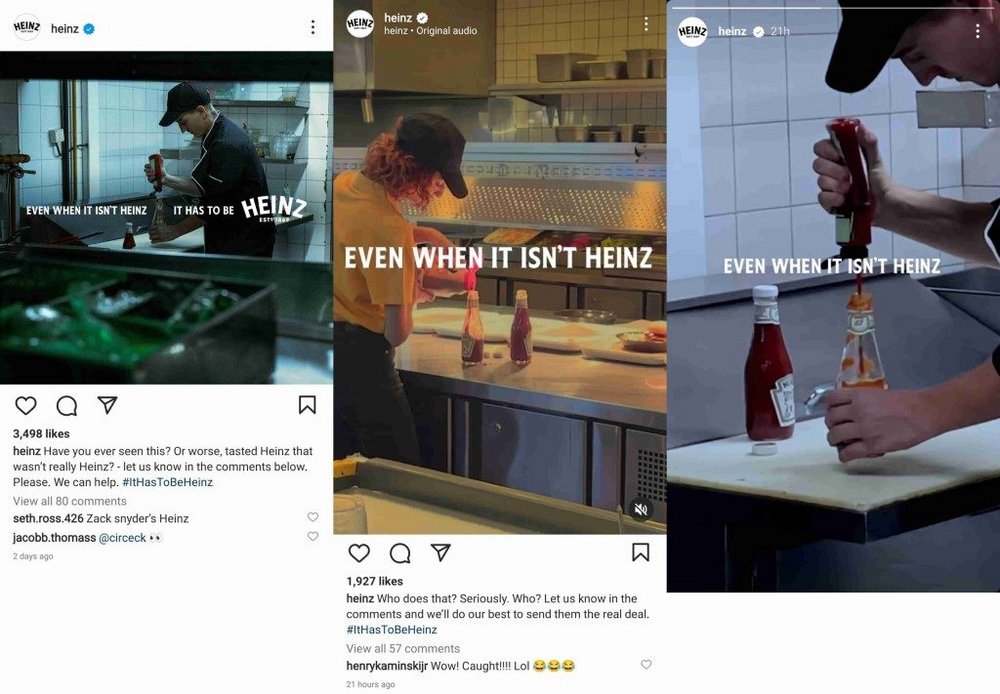
What were the KPIs behind the campaign and what results can you share?
Lang: This campaign is about driving conversation and engagement in culture, so a lot of what we’re looking at is the conversations and sentiment on social to see the reactions of our consumer base – which to date has been really great. We’ve already drummed up quite a bit of conversation and seen people really engage with the fact that this is an unspoken truth that Heinz has exposed. But it’s very difficult, if not impossible, to measure the effectiveness of a specific print or OOH ad like this.
Dubrick: With any piece of work we’re putting out into the world, we’re trying to drive momentum, energy and heat around the brand to put Heinz Ketchup front and centre in people’s minds. That’s why it’s important to not only consistently put out great work, but also at a high volume, making sure that Heinz Ketchup is pulsing in market and consistently hitting people with a new thought, idea or something totally unexpected that lands what the brand is all about.
Mike Dubrick, Rethink
They say that imitation is the greatest form of flattery, is that how Heinz approaches its competitors who try and copy and steal salience from the brand?
Lang: This is a very common behaviour for brands that are as iconic, distinctive, recognisable and as ubiquitous as Heinz. We don’t tend to get caught up in that, but it’s a good signal of the iconicity of Heinz Ketchup and the admiration that the category and our competition has for our brand. Then of course there’s the less interesting answer to this question, which is that we do have protection in terms of trademark and IP, so there’s only so much that imitation brands can do within the industry and it’s important for us to protect that.

Mike Dubrick, Rethink
In the current cost of living crisis, this ad could have struck a different tone with businesses that are trying to cut costs to help operate – is that something that you considered?
Dubrick: It didn’t feel right that something other than the real deal should be inside a Heinz Ketchup bottle. One of the things I’m really proud about Ketchup Fraud is that a lot of brands would have probably shied away from this, but for us it’s a really powerful demonstration that the brand matters. It means so much that people will put out the glass Heinz Ketchup bottle even if they’re not putting actual Heinz Ketchup in it. An important clarification is that we always try to attack these problems through a tongue-in-cheek approach. The intent of Ketchup Fraud is to create curiosity, intrigue and relatability versus an antagonistic finger-pointing campaign.
Lang: We talk a lot internally at Heinz about providing and delivering value to consumers, and value on a certain brand or in a certain category doesn't always look or feel the same. In this case, we felt really comfortable with Ketchup Fraud during this moment in time because we’re putting the power back into the voice of the consumer and letting them speak to what they value. Heinz is more premium than the rest of what’s offered in the category and commands the value for money – if we didn’t have that strength to back it up then I would have been really nervous. The execution was also really crucial in keeping the campaign supportive and to a certain degree lighthearted – we really needed to nail the tone so we didn’t come off as tone deaf during a moment of inflation and a lot of economic stability.
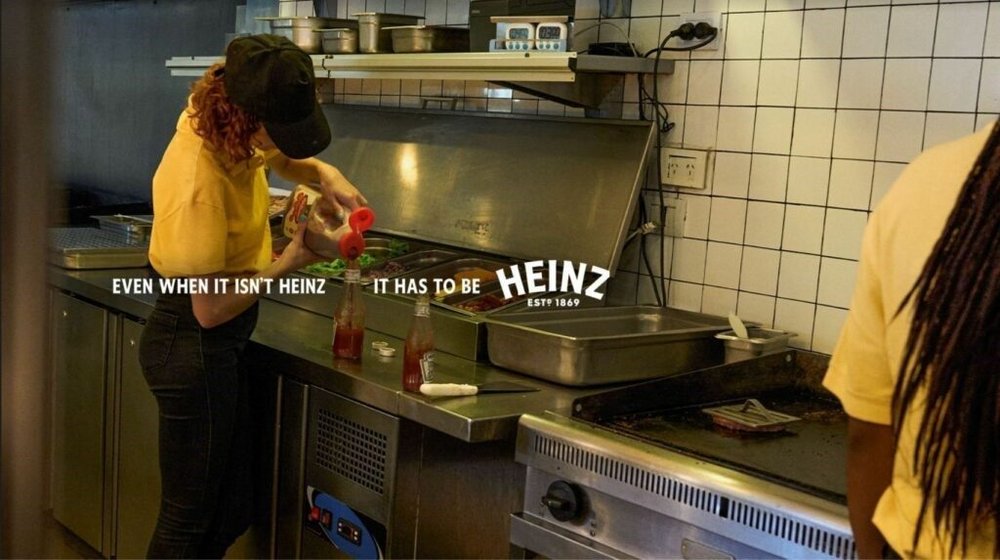
Do you think that the best campaign ideas are usually the ones that make you feel the most uncomfortable?
Dubrick: It's not always necessarily uncomfortable, but it should evoke a feeling. I like to start from my gut and work my way up. You’ve got to first go with your gut and then you can start to rationalise it afterwards. If you’re trying to do things that are different, they’re going to feel unfamiliar. You need that feeling of discomfort or newness to evoke some kind of feeling – that’s when you know you’re onto something powerful.
Lang: For me as a client in this situation, I could have found a lot of reasons to say no to this idea. But I’m happy that we trusted our guts and followed our instincts because that allowed us to say yes to something that ultimately we’re really proud of and will spark more a lot more great work for the brand.
